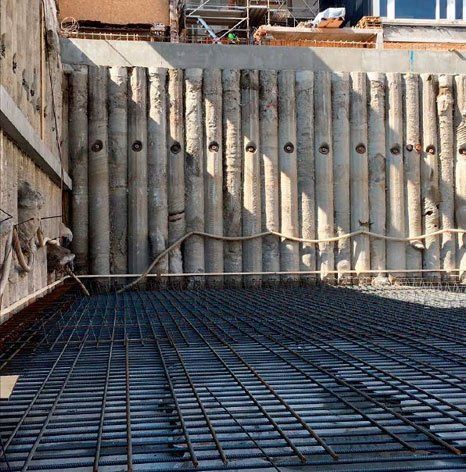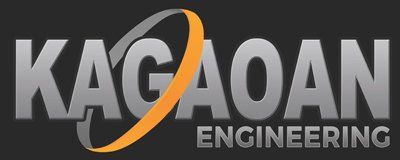Secant and Tangent Pile Walls Consulting - NYC, Manhattan, The Boroughs, Nassau County, Suffolk County, Long Island, and New Jersey - Kagaoan Engineering

Secant and Tangent Pile Wall Consultants
When working near existing structures, construction teams may need to create a wall to hold back pressure and soil. If a large excavation project is underway, then a secant or tangent pile wall may be necessary to hold back the earth. These walls make deep excavations safer for workers who must enter the area where the crew is removing the ground. Sometimes, these walls are important for keeping water at bay. When there is significant water pressure from underground sources, secant walls offer stability allowing teams to dig to the necessary depths.
At Kagaoan Engineering, our dedicated team of engineers and soil specialists help construction crews determine which method of shoring is necessary. Our team will work with your employees to determine the scope and depth of the project. We understand the permitting process and know how to navigate local channels to keep a project on track. Our experienced team members can help you design, build, and complete your project with secant and tangent pile walls.
Contact us
for free consultation.
Secant means overlapping and tangent means next to or adjacent to each other. These wall pilings are similar, but tangent piles are a form of secant walls. Tangent walls use piles that construction crews line up next to each other. These walls are not as watertight as secant piles, but both shoring designs hold back soil, heavy loads, and groundwater. Secant walls overlap by several centimeters and require primary and secondary pile placement.
Secant or tangent pile walls go in the ground through a drilling or boring process using steel beams for support. They may form sheet piling walls with wood, metal, or concrete. These walls can be thin compared to the circular design of secant and tangent piles. The piles offer more stability when holding back large loads.
Benefits of Secant Walls
- More rigid construction versus sheet walls
- More flexibility to customize wall shapes that bend or curve around a particular area
- Quieter to install cutting back on noise in areas where sound ordinances are stricter
- Easier to place in rocky soils and ground with large boulders
- Does not need wood lagging for support
- May use a soft or firm concrete with a hard concrete fill
Perks of Using Tangent Piles
Just like secant piles, tangent piles are quieter to install when you compare them to sheet piling methods. These walls provide structure for excavation sites near existing buildings. Many construction teams prefer to use these wall types in urban areas where buildings are close to each other.
How Tangent Piles are Different from Secant Walls
Secant walls overlap. Placing these piles means using a softer concrete mix to allow for drilling of overlapping piles. Then a final cast of hard concrete can set the wall creating a watertight structure. Tangent walls sit directly next to each other. Construction crews use hard, durable materials to set the pilings. Usually, workers place steel I-beams to reinforce these pilings and keep them from moving.
Tangent piles are easier and more affordable to place than secant walls. These walls often go in place faster helping construction crews who are on a tight budget. Tangent walls can be stronger than secant piling designs when using lateral supports in their construction. Both wall types offer support for nearby structures and buildings that may settle or move with vibration and excavation.
Drawbacks to Tangent and Secant Walls
- May not be waterproof
- Deep excavation may lower the structural stability of the piles
- Extra reinforcing using horizontal beams may be necessary
- These walls are more expensive to place
- Secant walls are the most expensive because it takes two methods of boring and placement to set the wall
- Draining the construction area may be necessary before installing tangent or secant piles
These walls are primarily useful for areas where holding back a lot of earth is important. For example, a business erecting a new building on a lot near heavy structures like a bridge or skyscraper need these walls to stabilize the construction area. These supports keep the ground from dramatically moving during excavation to help sustain the construction area and give strength to the surrounding soil pack.
Benefits of using our team of professionals
Our employees have a wide range of experience working with numerous organizations. We know how to obtain real estate and complete excavation or building projects from start to finish. Our expertise allows us to develop an effective and efficient plan for construction. Whether your company needs help with permits, boring inspections, setting up the blueprints for the work, or measuring the stability of adjacent structures during work, we can help. We provide assistance for many geotechnical and geological studies and works including:
- Drainage construction
- Subgrade inspections
- Soil stabilizing methods
- Site preparation
- Permit acquisition
- Land surveying
- Testifying in court
- Forensic studies
- Highway development
- Bridge repairs
- Retaining wall construction
- All piling and wall builds
Our secant and tangent pile walls consultants are happy to answer your questions about excavations and shoring. We work with numerous companies in the state of New York to help them devise a safe and effective wall placement plan. Our team has decades of experience and an entire team of engineering specialists who regularly work with these systems. To find out more about our services and how we can help your team, please call the Salk Group at 516-208-1533.
Please contact us
today!
About Kagaoan Engineering
Every member of Kagaoan Engineering is an experienced professional who brings distinct strengths and specialities to the company. We work together as team to ensure that your project has the skill sets required to succeed.

